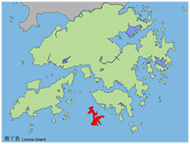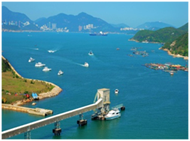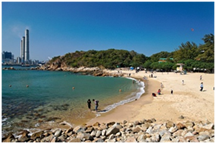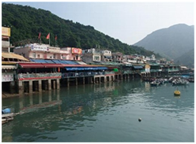Field Trips in Hong Kong:
July 03 (Wednesday)
Visit to Society for Community Organization & Sham Shui Po ( 深水埗 )
Visit to Stanley ( 赤柱 )
Visit to HK Museum of History
Introduction:
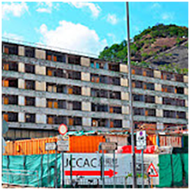 |
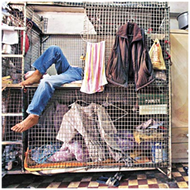 |
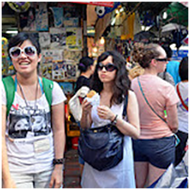 |
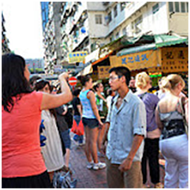 |
Society for Community Organization (香港社區組織協會) & Sham Shui Po (深水埗) Community
Edited from (http://www.soco.org.hk/project/project_main_e.htm)
SoCO is an incorporated, non-profit-making and non-governmental community organization formed in 1972 by church people. It firmly believes that everyone should be entitled to equal rights as equal opportunity for participation and fair distribution of social resources is the foundation of human rights. In the face of the widening disparity between the rich and the poor, and the increasingly restrictive political arena, it stand firm in its crusade to establish an equal society and to build a strong power base for the people.
SoCO has, through civic education programs and social actions, nurtured grassroots people with a sense of civic responsibility so that they can flex their political muscle. Its serving targets include caged lodgers, tenants with financial difficulties and living in appalling conditions, aged singletons, street-sleepers, mothers with no one-way permit to live in Hong Kong, families made up of new immigrants and boat dwellers, etc.
We would learn more about the inadequate housing and housing policy in Hong Kong from the Society, and you may refer to CNN Eunice Yoon’s report entitled ‘Living in a Cage in Hong Kong’ for more information concerning the cage homes (籠屋):
http://edition.cnn.com/2009/WORLD/asiapcf/10/28/cage.homes/index.html (October 28, 2009).
Our visit to the SoCO will also include a walk through certain bustling streets in Sham Shui Po such as Apliu Street (鴨寮街). Here is an excerpt from Jason Wordie’s Streets: Exploring Kowloon (2007, Hong Kong University Press, p.147) for your reference:
Apliu Street’s local reputation as Kowloon’s pre-eminent ‘Thieves’ Market’ is a little overstated these days, but nevertheless there is always plenty to see and do around here. At first glance, there would seem to be very little market for second-hand items in a society with Hong Kong’s conspicuous consumption levels and constant craze for the new, or at least novel. The widespread general poverty of many Sham Shui Po residents, in particular the large numbers of sun yee mun (new immigrants from China) who have made their homes in the district in recent years, all combine to make this perennially thronged street market an exception…
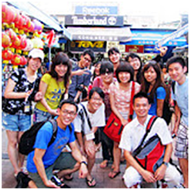 |
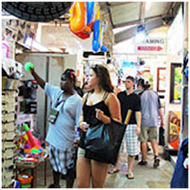 |
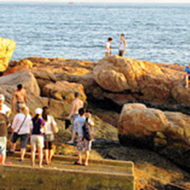 |
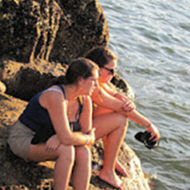 |
Stanley Market (http://www.hk-stanley-market.com/)
Stanley Market is one of the must-go places for tourists when they visit Hong Kong. You will find an interesting array of little shops selling silk garments, sportswear, art, Chinese costume jewelry and souvenirs. While a bit ‘touristy’ if you are a tourist it will certainly help you to cross off all the items on your souvenirs-to-buy-Aunt-Jane shopping list. A hard morning of shopping is also nicely finished off by a good lunch at one of the many restaurants, which are the reason that Hong Kong locals also frequent the area.
Stanley Market & Murray House (Introduction from the Hong Kong Tourism Board)
(http://www.discoverhongkong.com/eng/attractions/hk-stanley-market.html)
A popular market town on the sunny south side of Hong Kong Island, Stanley’s relaxed ambience, crisp sea environs and bargain buys have made it world famous.
Seven days a week the open market around Stanley New Street and Stanley Market Road throbs with the passing parade of life as bargain-hunters from all over the world join in the fun of haggling with shopkeepers and stallholders. Choose from brand-name clothing and accessories, or simply irresistible souvenirs, ornaments and other Oriental knick-knacks. The market is open from 10:30am to 6:30pm.
Stanley also has beautiful beaches that are popular with windsurfers. And when you're feeling peckish, you'll find a wide variety of funky bars and great restaurants to enjoy.
Among the more interesting restaurant sites on the waterfront is Murray House ( 美利樓 ) , a 160-year-old restored three-storey colonial building that was dismantled in 1982 from its original site in Central and then rebuilt in Stanley. It was restored in 1998 and now houses the Hong Kong Maritime Museum as well as restaurants.
ituated beside Murray House is Blake Pier ( 卜公碼頭 ) at Stanley. Originally located in Central, Blake Pier was first dismantled in 1965 and later relocated to Morse Park to form the roof of the Morse Park pavilion. Now it has returned to its role as a public pier in Stanley, complementing the colonial architectural style of Murray House.
Introduction:
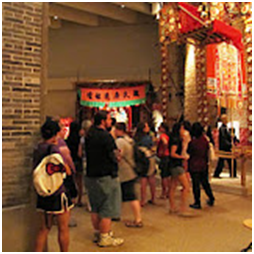 |
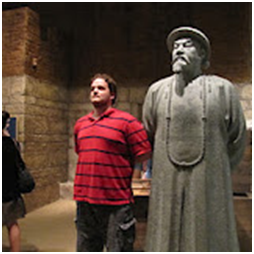 |
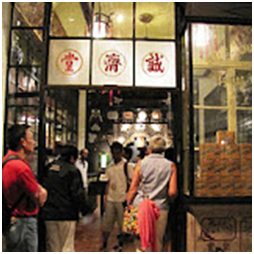 |
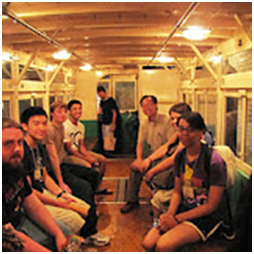 |
|---|
Frommer’s Review (Travel Guides’ article from the New York Times)
If you visit only one museum in Hong Kong and you're prepared to spend at least 2 hours, this should be it. Make it one of your first priorities, so you’ll have a better understanding of what you see during the rest of your trip. The permanent exhibit the Hong Kong Story is an ambitious attempt to chronicle the city’s long and fascinating history, starting with the formation of its natural history and its beginnings as a Neolithic settlement and continuing through its development as a fishing village, subsequent transformation into a modern metropolis, and 1997 handover to China. Through displays that include dioramas, replicas of fishing boats, models, reconstructed traditional housing, furniture, clothing, and items from daily life, the museum introduces Hong Kong’s ethnic groups and their traditional means of livelihood, customs, and beliefs. These include fishermen who lived their entire lives on boats, the Five Great Clans who settled in what is now the New Territories and built walled communities, the Hoklo (who worked the territories’ salt fields), and the Hakka, primarily rice farmers.
You can peer inside a fishing junk, see what Kowloon Walled City looked like before it became a park, see the backstage of a Chinese opera, read about the arrival of European traders and the Opium Wars, study a map showing land reclamation since the 1840s, see how Hong Kong changed under Japanese occupation during World War II, and view a model of a family’s flat in a public housing estate. Ten small movie theaters are spread throughout the museum depicting everything from Hong Kong’s beginnings and the Opium Wars to its movie industry, though showings in English are limited. One of my favorite parts of the museum is a re-created street of old Hong Kong, complete with a pawnshop, teahouse, and a Chinese herbal-medicine shop actually located in Central until 1980 and reconstructed here. Also on display are 19th- and early-20th-century photographs, poignantly showing how much Hong Kong has changed through the decades.
July 05 (Friday)
Visit to HKMA (HK Monetary Authority) Information Centre
Visit to Legislative Council
Introduction:
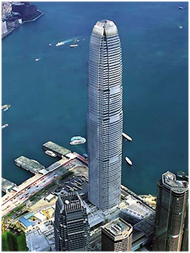 |
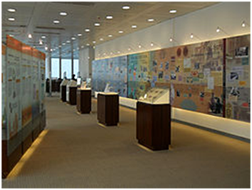 |
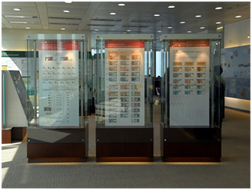 |
The HKMA Information Centre
Edited from (http://www.hkma.gov.hk/eng/about-the-hkma/hkma/about-hkma.shtml) &
(http://www.hkma.gov.hk/eng/about-the-hkma/hkma-information-centre/hkma-information-centre.shtml)
The Hong Kong Monetary Authority (HKMA) is the government authority in Hong Kong responsible for maintaining monetary and banking stability. Its main functions are:
- maintaining currency stability within the framework of the Linked Exchange Rate system;
- promoting the stability and integrity of the financial system, including the banking system;
- helping to maintain Hong Kong’s status as an international financial centre, including the maintenance and development of Hong Kong’s financial infrastructure;
- managing the Exchange Fund.
The exhibition area of the Centre introduces the main policy objectives of the HKMA and explains how the HKMA carries out its work. It includes four sections. A currency section traces the development of money and banking in Hong Kong and shows examples of coins and notes used over the years in and around Hong Kong. A policy section explains the work of the HKMA. A further topical section focuses on issues of current interest. A timeline focusing on Hong Kong’s monetary and banking history runs along the whole length of the main wall of the Exhibition Area.
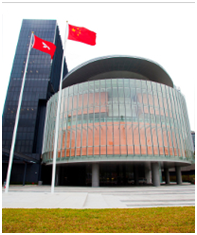 |
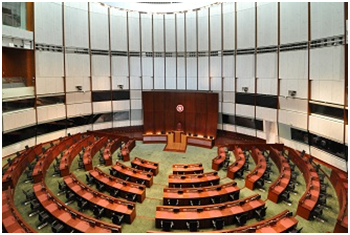 |
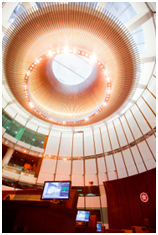 |
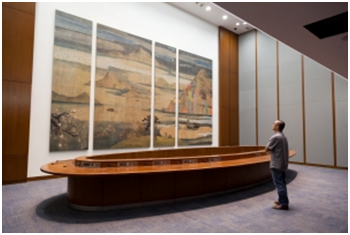 |
Legislative Council
Edited from (http://legco.gov.hk/general/english/intro/hist_lc.htm)
The Hong Kong Special Administrative Region (HKSAR) of the People’s Republic of China, established on 1 July 1997, is vested with legislative power under the Basic Law of the HKSAR. The Legislative Council is the legislature of the Region.
The main functions of the Legislative Council are to enact laws; examine and approve budgets, taxation and public expenditure; and monitor the work of the Government. In addition, the Legislative Council of the HKSAR is also given the power to endorse the appointment and removal of the judges of the Court of Final Appeal and the Chief Judge of the High Court, as well as the power to impeach the Chief Executive.
From 26 January 1841 to 30 June 1997, Hong Kong was a British colony and its first constitution, in the form of Queen Victoria’s Letters Patent entitled the Charter of the Colony of Hong Kong and proclaimed at the Government House on 26 June 1843, authorized the establishment of the Legislative Council and empowered ‘the Governor for the time being… with the advice of the said Legislative Council… to make and enact all such Laws and Ordinances as may from time to time be required for the peace, order and good government… of Hong Kong’. The Letters Patent of 1917, which replaced the 1843 Charter, added the significant words ‘and consent’ after the words ‘with the advice’.
The Legislative Council has undergone great changes over the past one and a half centuries and evolved from being an advisory body to a legislature with powers and functions to render checks and balances on the executive authorities.
July 06 (Saturday)
Excursion to Lantau Island (Ngong Ping 360, Ngong Ping Village, Big Buddha, Po Lin Monastery, Wisdom Path)
Introduction:
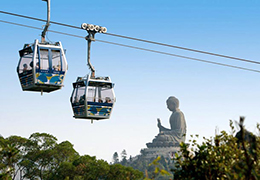 |
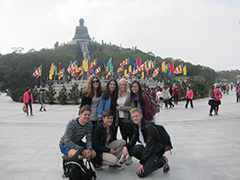 |
Ngong Ping 360 website (Introduction from Ngong Ping 360 Website)
Ngong Ping 360 is destined to be one of Hong Kong's 'must see' tourist attractions on Lantau Island. Preserving the natural ecological environment and features of the Ngong Ping area and converging the custom and culture of the Lantau Island. Ngong Ping Cable Car is a visually spectacular 5.7km cable car journey, travelling between Tung Chung Town Centre and Ngong Ping on Lantau Island. Visitors will enjoy panoramic views of the Hong Kong International Airport, South China Sea, the Tian Tan Buddha Statue, as well as the flora and fauna of North Lantau Country Park. Adjacent to the Ngong Ping Cable Car Terminal, Ngong Ping Village is an impressive cultural themed village, incorporating two major attractions, including Walking with Buddha and the Monkey's Tale Theatre. For a more cultural and religious experience, the world's tallest seated outdoor bronze Buddha, the Tian Tan Buddha Statue, is only a short stroll from the Ngong Ping Village. Tian Tan Buddha Statue is the major centre for Buddhism in Hong Kong and is located next to the Po Lin Monastery.
The Big Buddha and Po Lin Monastery (Introduction from the Hong Kong Tourism Board)
Once merely a remote monastery hidden by lush, mountain scenery, the Po Lin Monastery made it to the world map when the extraordinary Tian Tan Buddha statue (informally known as the Big Buddha) was erected in 1993. Sitting 34 metres high and facing north to look over the Chinese people, this majestic bronze Buddha draws pilgrims from all over Asia. The eyes, lips, incline of the head and right hand, which is raised to deliver a blessing to all, combine to bring a humbling depth of character and dignity to the massive Buddha, which took 12 years to complete. Climb the 268 steps for a closer look at this remarkable statue, and to enjoy the sweeping mountain and sea views that can be seen from its base. Opposite the statue, the Po Lin Monastery is one of Hong Kong’s most important Buddhist sanctums and has been dubbed ‘the Buddhist World in the South’. Home to many a devout monk, this monastery is rich with colourful manifestations of Buddhist iconography and its pleasant garden is alive with birdsong and flowery scents. You can also enlighten your appetite at their popular vegetarian restaurant.
July 08 (Monday)
Visit to Chungking Mansions & Christian Action's Service Centre (NGO for refugees)
Introduction:
 |
 |
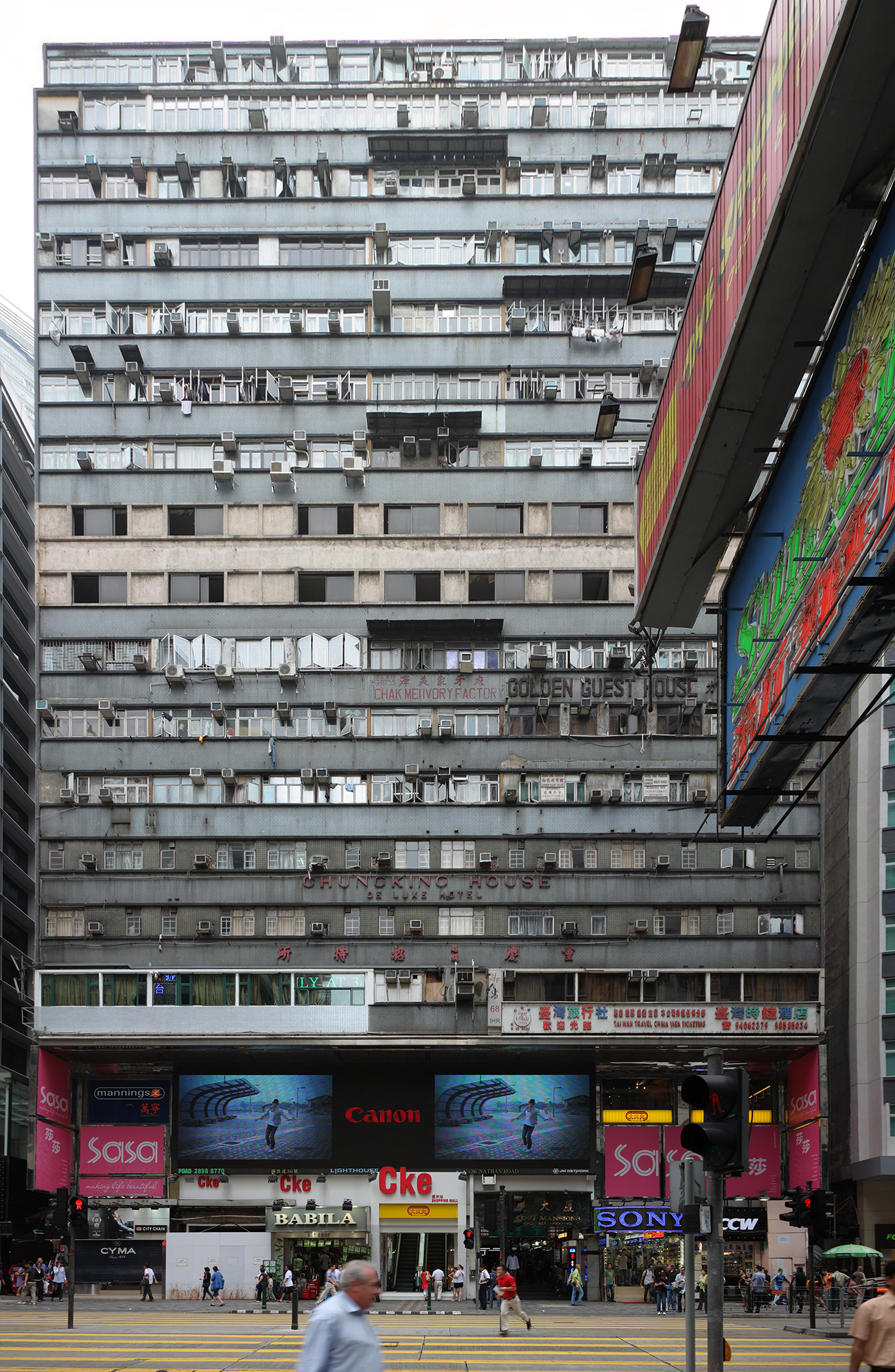 |
Chungking Mansions (重慶大廈)
Excerpt from Mathews, Gordon. 2012. “Chungking Mansions as a ‘Global Building’”, Research Frontiers (Issue 22). Hong Kong: Research Grants Council.
(http://www.ugc.edu.hk/rgc/rgcnews22/eng/05.htm)
Chungking Mansions is a building full of cheap guesthouses, restaurants, and wholesale businesses located in the heart of Hong Kong’s tourist district of Tsim Sha Tsui. It is where traders, merchants, temporary workers, and asylum seekers from South Asia and sub-Saharan Africa come to seek their fortunes. In this research, I (note: Prof. Gordon Mathews) sought to understand the people in Chungking Mansions: how exactly they make their livings and comprehend their lives. This was pursued through extended ethnographic research, living in Chungking Mansions for 250 nights over four years, interacting with and interviewing its residents, and accompanying traders and merchants to China, India, and Africa to learn about the global context of their trades and lives.
I found that Chungking Mansions serves as a central hub of what I term ‘low-end globalization’. This is the globalization of cheap, often copy goods smuggled across borders, largely under the radar of states and laws; this is globalization as experienced by most of the world’s people. I estimate, on the basis of extensive interactions with merchants, that 20% of the mobile phones in sub-Saharan Africa have passed through Chungking Mansions. The building exists as a hub of low-end globalization because, due to Hong Kong’s flexible visa policies, it serves as an intermediary between South China manufacturers and developing-world entrepreneurs. South China, with its massive production of cheap goods, plays an essential role in spreading the fruits of globalization to South Asia and sub-Saharan Africa, areas that otherwise would not be able to experience globalization; Chungking Mansions, under Hong Kong’s neoliberal rule of law, facilitates this process.
I also found out much about all the other kinds of people in the building, including asylum seekers, who provide the building with its intellectuals as well as its cheapest labor; Pakistani merchants, who may have lived in Hong Kong for generations; Indian temporary workers flying back and forth between Hong Kong and Kolkata every 42 days, carrying goods to finance their journeys; tourists from all over the world staying in the building’s guesthouses; Indian and African sex workers plying their trade and dreaming of becoming middle-class; and Nepalese heroin addicts surrendering their families’ dreams. All these people play key roles in Chungking Mansions’ low-end globalization.
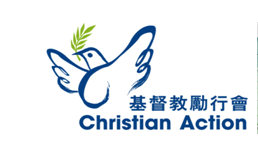 |
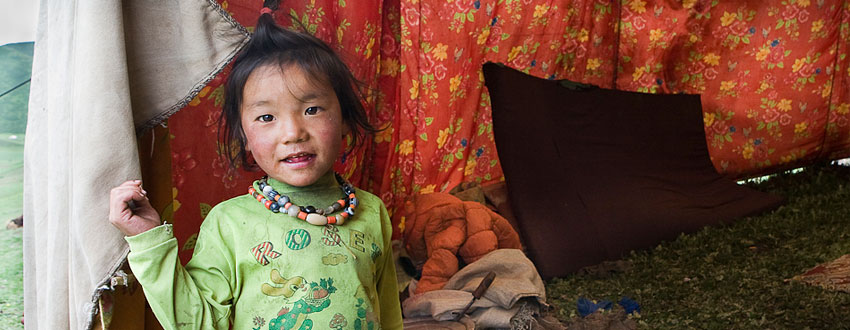 |
Christian Action’s Service Centre
(Edited from http://www.christian-action.org.hk/index.php/en/why-ca)
Christian Action was established in 1985 as a registered charitable organization in Hong Kong. Its mission is to serve those who are poor, disadvantaged, marginalized, displaced or abandoned regardless of their age, gender, nationality and religion.
The aim of Christian Action is to give them hope, dignity and self reliance. Its service includes:
(1) Humanitarian programs in Hong Kong for refugees, foreign domestic helpers, ethnic minorities, and cross-border families and immigrants from Mainland China.
(2) Training programs for the underprivileged and unemployed and professional training services for corporate clients needing specialized training for their workforce.
(3) Humanitarian programs in Qinghai Province on the Tibetan Plateau. This includes co-managing three children’s homes; the province’s first and only Children’s Rehabilitation Centre for disabled children; the construction of winter homes, rural clinics and schools for impoverished Tibetans, and the provision of school scholarships for the rural poor.
